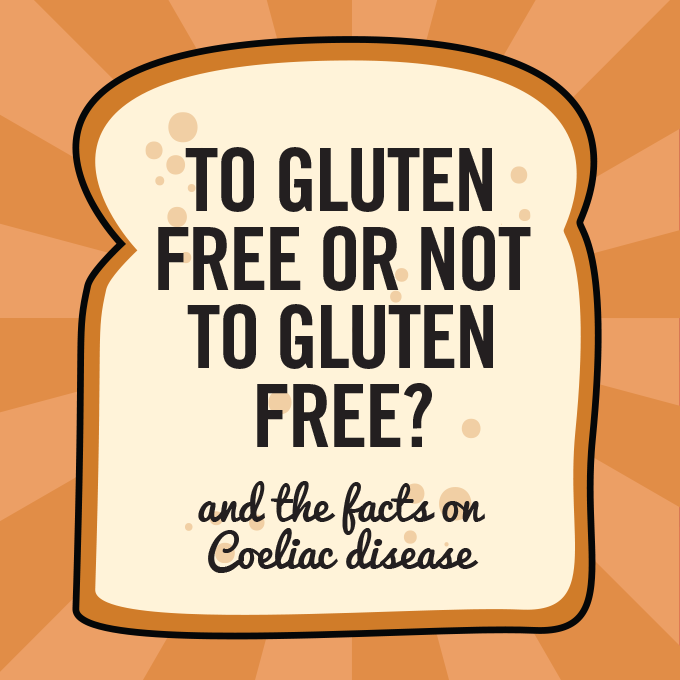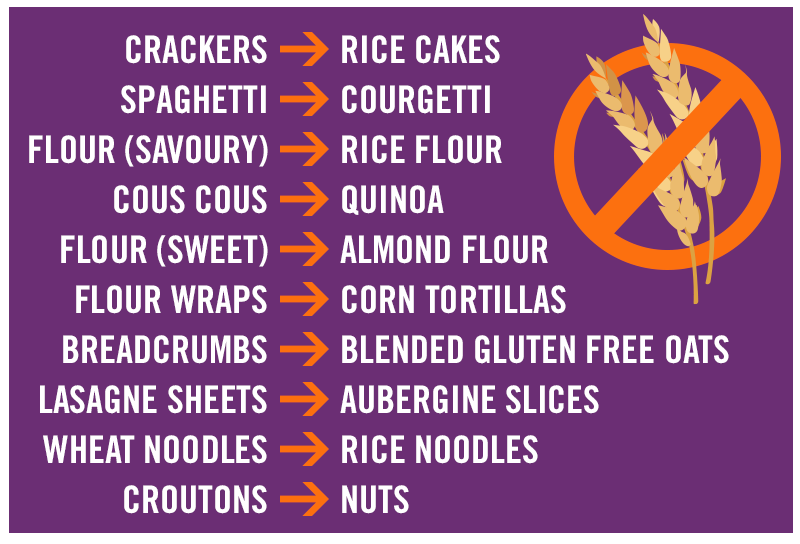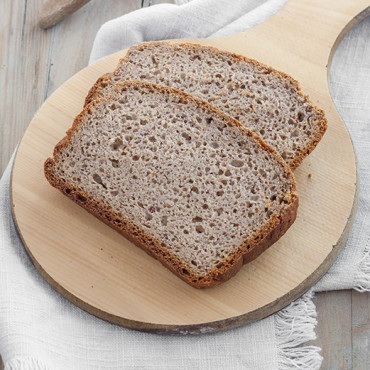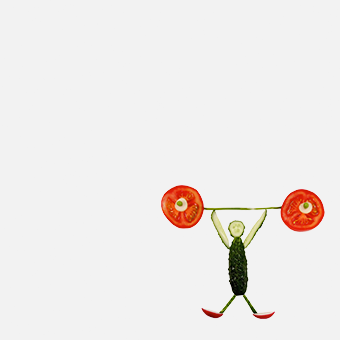Coeliac UK runs their Coeliac Awareness Week annually for one week in mid-May. But what is the disease, and what are the signs for spotting if you have it? Read on to find out.
What is Coeliac disease?
Coeliac, or celiac, as it is sometimes confusingly also spelt, is a disease that affects digestion. Contrary to the beliefs of many, coeliac disease is not an allergy or an intolerance. It is what is known as an “autoimmune” condition, which along with type 1 diabetes, rheumatoid arthritis and lupus, means that the immune system accidentally attacks healthy tissue, and the body is not therefore properly protected against infection. In the case of coeliac disease, it’s gluten that causes the problem.
What is gluten?
Gluten is the collective name for the proteins that are found in wheat, barley, spelt, rye and triticale (a hybrid of wheat and rye). When combined with water, these proteins act as a glue, making dough elastic, allowing bread to rise, and helping food to keep its shape. This is what gives “glu-ten” its name.
When gluten is ingested by someone who has coeliac disease, the immune system mistakes gliadin, a substance that makes up gluten, as a threat and attacks it. This damages the lining of the small intestine, specifically the million finger-shaped growths called villi, which become inflamed and flattened (this is known as villous atrophy). As the villi are in charge of absorbing nutrients, this then leads to malnutrition, illness or deficiencies.
The painful bit…
The reactions to eating gluten when you have coeliac disease differ from person to person, and also range in intensity from mild to possibly severe. Symptoms include:
– Bloating and flatulence
– Diarrhoea, constipation or a combination of both
– Nausea
– Abdominal pain
– Weight loss
– Iron, folate, zinc or vitamin D deficiency
– Mouth ulcers or dental defects
– Tiredness due to malnutrition
– Slowed growth (in children)
Although unpleasant, these symptoms can be helpful in diagnosing the condition initially. It is not in fact known why certain people have coeliac disease, but it affects one in every hundred people in the UK. According to Coeliac UK, only 24% of those who have coeliac have been diagnosed, which could mean that there are currently around half a million people who are living with the disease and don’t know.
Dermatitis herpetiformis
Dermatitis herpetiformis is a skin manifestation of coeliac disease. This shows itself as a rash on the face, elbows, knees, shoulders or bum, and blisters can often form as well. Luckily, this painful condition only affects around one in every 3,300 people.
How is coeliac diagnosed?
If you are sure you have symptoms that are listed above or are at a very high risk of developing them, you might like to go for a coeliac screening. There is a two-stage process when diagnosing coeliac disease. First, a sample of your blood will be tested for the presence of the common antibodies related to the condition. It is important that in the time between deciding on a blood test and having blood taken, you continue to eat your regular diet containing gluten so that your blood can be accurately monitored. It is possible to not have these antibodies in your bloodstream but still have coeliac disease, so in both cases, your GP is likely to recommend you for a biopsy, as a way of confirmation. This will be like an endoscopy, but small samples of your small intestinal lining will be taken and analysed as well. If the biopsy comes back positive, you may also have to carry out a test to see how the condition has affected you already, which may include more blood tests for vitamin and mineral deficiencies. It is recommended that you go for a screening if your parents, siblings or children have coeliac, as there are high chances of the condition being hereditary.
There is currently no cure for coeliac disease, and the only treatment is to adapt to a gluten-free diet. As well as all the many “free-from” products out there, here’s a guide to ten great food swaps you can make:
Going gluten-free
If you suffer from coeliac disease, it is important that you are fully committed to a gluten-free diet, possibly for life. Some people, however, choose to opt for a gluten-free diet without having coeliac disease. This may be because they have a non-coeliac gluten sensitivity, and giving up gluten makes them feel better. But over the past decade, shelves of ordinary high street shops across the world have been inundated with gluten-free products. Why is this?
The truth is, there is very little evidence to prove that going gluten-free is healthier. Weight loss and increased energy are both myths that have no solid backing from the experts. Although some may find that cutting out gluten relieves their feelings of tiredness, or helps to shift a few extra pounds, nutritionists are concerned that this self-diagnosis approach to gluten sensitivity is harmful, and these outcomes may simply come from cutting out high-calorie flour-based snacks, rather than gluten itself. By avoiding all products that contain gluten, you may find that you aren’t getting sufficient minerals like fibre, iron, folate, calcium, vitamin B12, phosphorus and zinc. Although those with coeliac disease will have to pay extra attention to these areas, if you don’t necessarily have to, there could be dangers involved.
So remember, it may sound trendy, but a gluten-free lifestyle isn’t an easy one. Seriously consider your reasons before opting for it if you don’t need to.




















